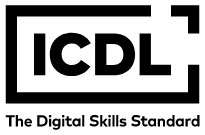A Review of Deep Learning-Based Feature Extraction Techniques for Iris Image Analysis
Abstract
Feature extraction is a critical process in image processing, directly influencing the accuracy of classification tasks. Traditional feature extraction methods often fall short by capturing only a limited set of features, which can result in suboptimal classification, particularly in complex biometric systems. In the domain of iris recognition, the extraction of minute and intricate features is paramount for achieving high accuracy and reliability. This paper presents a comprehensive review of advanced deep learningbased feature extraction techniques tailored for iris images. These techniques are designed to capture and process fine details such as lacunae, Wolfflin nodules, contraction furrows, and pigment spots—features that are essential for both recognition and diagnostic purposes. We compare state-of-the-art methods including convolutional neural networks (CNNs), U-Net, Link-Net and other custom architectures, highlighting their advantages in terms of segmentation precision, feature extraction efficiency, and computational requirements. Our review also addresses the challenges posed by variations in iris texture, illumination, and occlusions, which can affect the accuracy of feature extraction. Experimental evaluations of these methods show that deep learning algorithms significantly improve the detection of subtle features, offering promising results for both recognition accuracy and disease diagnosis applications. Finally, we outline future directions in the field, including the potential for integrating multiresolution and attention-based models to further enhance the extraction of fine details from iris images. We also discuss the opportunities for real-time deployment of these techniques in mobile and resourceconstrained environments, opening new avenues for iris recognition and diagnostic systems.
Full Text:
PDFDOI: https://doi.org/10.31449/inf.v49i21.6346

This work is licensed under a Creative Commons Attribution 3.0 License.









